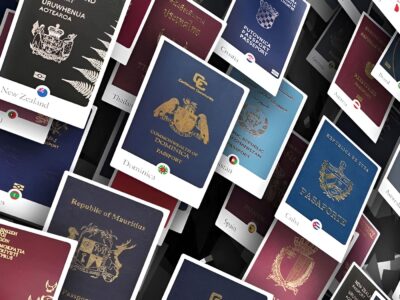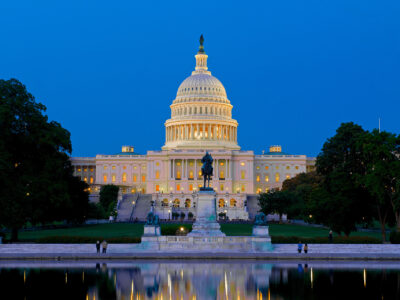Destinations from around the world have the Indian millennial at the core of their India strategy. A travel bug, often with loaded purses and a hunger to discover, makes this category the biggest catch around.
“I follow a number of leading travel bloggers and see their blogs and posts on the social media as they are my source of inspiration for my travels,’’ recounts Mriganka Dhar, 39, who runs Modern Guinea House, a jewellery store in Kolkata. He goes on to add that he typically goes for those destinations that have been the least visited. ‘‘I normally always look for the destination where human feet have touched the least,’’ Dhar says.
Ayantika Halder, a PR professional based in New Delhi, says culture and heritage were the principal pulls for her travel to Austria. ‘‘I chose Austria because of its scenic beauty, magnificent buildings and the history and culture associated with it. The urge to know about European history and culture, explore the city of music Vienna, to know more about Mozart, to feel the crisp air and watch the beautiful landscape and breathtaking hills of Salzburg were the sources of inspiration to visit Austria,’’ says Halder, who managed to splurge close to INR 150,000 per head on her overseas visit with her spouse.
Halder goes on to add that social media was instrumental in her choice of hotels as well as on the activities to do and places to visit in Austria, even if her mind was already set on visiting the land of Mahler and Mozart.
Travellers like Mriganka and Ayantika as well as millions of other Indian millennials are now the prime target segment of travel companies as well as destinations from around the world as they try to secure a chunk of the large and lucrative Indian outbound travel market that has been growing in double digits. Millennials from the world over are being sought by tourism companies as well as destinations. But as India has the largest number of youngsters, that account for 65 pc of the country’s population or over 900 million persons, it is indeed at the centre of attention all over the world.
A multi-million dollar market
Millennials also known as the Generation Y are defined as the persons born between 1981 and 1999. As a community, they are tech-savvy, innovative thinkers and influential buyers. In many countries, especially India, China and the US, they are the most lucrative segment for businesses in the travel and tourism market. Experts estimate that the purchasing power of the millennials has been increasing consistently and it will keep on rising for another decade or so and hence people born in this era will reach their peak earning and spending power in the next decade. Their earning potential is likely to continue to be a strong driver for the tourism sector.
The millennials are also the driving force behind the most important trends in the recent years in Indian travel industry. One such preference of the young travellers is personalisation of travel. More and more millennial travellers are seeking tailor-made and bespoke programmes and don’t mind shelling out a premium for a package made to order and suiting their demands and expectations.

Millennial travellers are seeking experiential travel experience with activities like camping under the starlit sky, visiting events like Hot air balloon festival and taking a ride on the Ship of the Desert!
Exotic, exclusive & expensive
The millennial travellers seek out in priority those destinations and products that are exotic not just to the young travellers, but also the ones where their peers or other Indian travellers don’t go in big numbers as posting on social media with an offbeat location as the backdrop is seen as a huge brownie point for the millennials in particular and travellers in general. ‘‘Yes, of course, seeing someone post in Facebook or reading some travel blog really entices me to go ahead and experience those places in real life,’’ says Sarbajeet Dam, 31, a manager with a travel company in Bangkok.
Also, they are turning away from just sight seeing and moving towards experiential travel, not just in the familiar destinations like Europe or North America, but also in relatively unexplored countries like Jordan, Tunisia, Azerbaijan or Mexico. Destinations and travel companies that can adapt swiftly by understanding the preferences of millennials would stand to gain from the immense and seemingly endless opportunities that the millennial travellers offer.
Many other millennials, especially those employed by ITES companies, are also able to combine a number of short expeditions whenever they are sent overseas by their employers on business. ‘‘I have been several times to Paris as part of my job and each time, I ensure that I take a weekend or two and visit some places outside Paris and of course, I have now visited practically everything that is to be seen in the city itself,’’ says a 28-year-old IT professional working with Franco-British IT firm Sopra-Steria. The same is true of Indian professionals sent on missions to various parts of the world, notably the United States which has the largest number of Indian IT professionals working there on short or longer term visas.
Experimentative, easy going
Another characteristic of the young travellers that sets them apart from other tourists is their openess to foreign cultures. There are numerous taboos for older Indian travellers, notably related to their food habits as well as logistical challenges like sharing rooms with unrelated people, notably of the opposite gender. But the millennials often travel with their friends or work colleagues, including unmarried persons of the opposite gender.
And unlike the older travellers for whom trying foreign cuisine is a challenge, if not an outright no, no, many young Indians actually look forward to trying the local fare and have developed a taste for culinary adventures. ‘‘Basically it depends on the local people who are more tourist friendly, have more crowd-free places where an ideal holiday can be spent either with your partner or friends. And most importantly is the local cuisine which I love to try and get more chance to experience the local food under the influence of the locals,’’ says Sarbajeet Dam, the travel professional.
Even those travellers who may be largely vegetarian back home do take the plunge in sampling meat specialities in the foreign lands, notably beef, which is difficult to find in many parts of India. The young Indian travellers also readily sample the local wines and spirits and end up spending almost every evening sampling the night life in most destinations, while the older travellers would generally be already tucked in their beds after a standard Indian dinner!
Destinations are happier getting customers that don’t necessarily hanker after their own cuisine and actually look forward to trying the local cuisines and sample the night life. ‘‘For us, it has traditionally been one of the biggest challenges in the Indian market and a very large limitation in developing the market to its true potential as the first question that the tour operators used to ask us was about the availability of Indian food. This is not easy as we are a global tourism destination and our travellers come from 150 nations. Even though the Indian market is big and will grow bigger, we simply cannot manage to logistics involved in organising customised meals for each of our large markets,’’ recounts the marketing director of a leading attraction in Paris that receives over 150,000 Indian travellers each year, making India its fifth largest source market. The marketing director says he could easily double or even treble the arrivals by introducing Indian meals, but that would mean charging a higher price, which is an even bigger challenge while dealing with Indian groups.
Read the full version of the article in India Outbound Magazine February 2020























